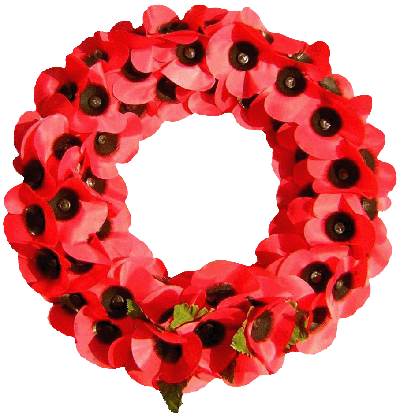War Memorials
Every year in November the UK's war memorial, The Cenotaph in Whitehall, is the focus of the national day of remembrance when the great and the good join veterans of all the services in a service of remembrance and wreath laying ceremony. This event is echoed all around the country at war memorials, small and large, in cities, towns, villages and hamlets.
Memorials take many forms:
Community Memorials. The most common form is probably the stone cross, often in or near the churchyard though other prominent locations are used. The other common form is a wall mounted plaque, tablet or scroll inside the church.
There are, of course, other forms - see Cold Ash for example, or the Speenhamland Triptych, once housed in St Mary's Church, Speenhamland, but resited in St Nicolas, Newbury, when St Mary's was demolished.
The community is most commonly the town, village or hamlet in which the memorial is located; though it might also be the congregation of a particular church.
These memorials may contain no more than a couple of names, but can also commemorate the deaths of hundreds. Most were erected in the early 1920s and have become an integral feature of the village or town - but they can change, for example a recent refubishment of the stone of remembrance in Upper Basildon added several new names and removed one.
Galliopoli marker in Newtown Road Cemetery, Newbury |
Commonwealth War Graves. Many servicemen returned to the UK for treatment after being wounded, or succumbing to sickness. Those that died were often returned to their homes for burial. Much more recently the old policy of burying deceased servicemen near where they died has been suspended and the deceased are repatriated for burial at home. Consequently the Commonwealth War Graves Commision's (CWGC) white Portland stone markers are a familiar site in parish churchyards and cemeteries all over West Berkshire. These are the instantly recognisable war graves, but many others are marked by stones supplied by the family; where the deceased is interred in the grave the CWGC monitors the state of the stone and will add a new marker should the family stone age to the point of illegibility. The supplementary stone may be the instantly recognisable white marker, in some cases added sympathetically (Shaw Cemetery) and in other less so (Yattendon). However, recently the far less obstrusive 'Gallipoli' makers are being used (see picture).
Family Memorials. Supplementing the community memorials and official war graves are numerous private memorials and graves. Ornate plaques, lavish stained glass windows and numerous gravestones mark the passing of loved ones lost in the service of their country. Gravestones in this category may mark the grave of the deceased serviceman, though these will usally fall into the CWGC category above. However, there are many stones recording the passing of someone whose actual grave is a long way away.
Event Memorials. Some memorials mark specific events, such as: the Falkland Memorial to the 1st Battle of Newbury, 1643; or the memorials to the WW2 Burma Campaign in St Nicolas' Church, Newbury and St Lawrence's, Hungerford; or the memorial at Shaw Cemetery to those who died in the bombing of Newbury in 1943. The most notable such memorial in West Berkshire is the impressive Falkland Memorial Chapel at Pangbourne College, marking the loss of the 258 servicemen and civilians who died in the Falklands War, 1982.
Colleague Memorials. Erected in places of work, schools or military establishments these memorials to workmates, old boys and comrades are often difficult to access.


Find a memorial :
| Died this day: | |
| 29 November 1918 | |
| Walter Vince | |
| Mortimer |

Like this site? Show your appreciation through a donation to a great charity.